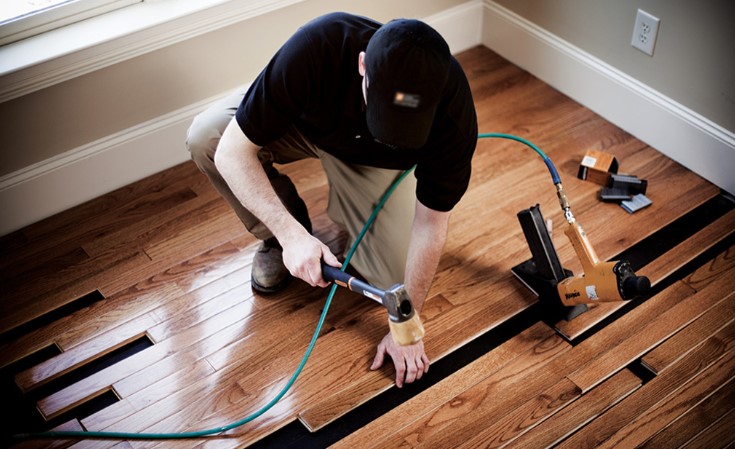climate goals, circular economy and support to people & communities

PARIS, FRANCE, March 9, 2023 – Tarkett, a world leader in innovative and sustainable flooring and sports surface solutions, releases today its 2022 Corporate Social & Environmental Responsibility (CSR) Report. Fully audited by an independent third party, this report outlines the company’s significant sustainability performance.
“Our sustainability performance over the past year contributes actively to Tarkett’s ambition: to be the easiest, the most innovative and the most sustainable flooring and sports surfaces company to work for and to work with. The pursuit of ‘always more’ is threatening our planet. We need to find a way to deliver more with less. For us, this means less waste, lower emissions and greater well-being. Doing more with less is our commitment, our mission and our mindset.” said Fabrice Barthélemy, CEO of Tarkett.
In 2022, Tarkett’s ambitious climate goals to reduce greenhouse gas emissions by 2030 were approved by the independent Science Based Target initiative (SBTi).1 The world’s leading climate performance and reporting platform, CDP, recognized the company’s climate action through a leadership level A- score. Moreover, the renowned sustainability rating agency EcoVadis gave a Gold Medal to Tarkett and ranked the company among the top 2{ec3984a59f336e74413ebe8cd0979a3fa414de3884cb1e2a06779d998b58dc95} performing companies of all 90 000 rated organizations in 172 countries.
Lower Emissions
-
Scope 1 & 2 greenhouse gas emissions from manufacturing operations were reduced by 41{ec3984a59f336e74413ebe8cd0979a3fa414de3884cb1e2a06779d998b58dc95} versus 2019, notably through the increased purchase of electricity coming from renewable energies.
-
Scope 3 emissions also decreased by 13{ec3984a59f336e74413ebe8cd0979a3fa414de3884cb1e2a06779d998b58dc95} versus 2019, linked to the evolution of our product mix, the actions taken to decarbonize our products and the progress in the share of recycled materials which now reach 17{ec3984a59f336e74413ebe8cd0979a3fa414de3884cb1e2a06779d998b58dc95} (vs. 15{ec3984a59f336e74413ebe8cd0979a3fa414de3884cb1e2a06779d998b58dc95} in 2021)2. In 2022, 43{ec3984a59f336e74413ebe8cd0979a3fa414de3884cb1e2a06779d998b58dc95} of the company’s total energy consumption came from renewable energies. 13 production sites purchased 100{ec3984a59f336e74413ebe8cd0979a3fa414de3884cb1e2a06779d998b58dc95} electricity coming from renewable energies.
Less Waste
-
Tarkett has reached strong progress with ReStart®, its take-back and recycling program, by transforming end-of-use flooring and recycled materials into new floors. This helps reducing waste and carbon footprint, diminishing the need for virgin raw materials while avoiding landfill and incineration. In the last 12 years, the company has collected the equivalent of 11 Eiffel Towers (115,000 tons) of flooring through Restart®, into its eight recycling centers. The program is now deployed in 26 different countries, including in Europe, as well as North America, Brazil and India.
-
Throughout the year, Tarkett expanded circular collaboration with its customers and multiplied ReStart® flooring take-back and recycling projects across the globe. For example, several more IKEA stores in Sweden and seven other European countries returned post-use flooring to Tarkett for recycling into new floors. The recovered homogeneous vinyl flooring is returned through Restart® to Tarkett’s on-site recycling facility in Ronneby (Sweden). Since this collaboration began in 2020, Tarkett has received more than 30,000 square meters of used flooring. This will help avoid more than 300 tons of CO₂.
-
Within Tarkett Sports Division, our FieldTurf’s Goal Zero program in North America helps diverting job-site waste from landfill and facilitating its reuse and recycling. In 2022, we recovered over 4,250 pallets of old artificial turf, diverting them from landfill, and recycling 182 tons of material (403,000 pounds).
-
Greater Well-Being
-
For many years, Tarkett has been proactively seeking alternatives to phthalate plasticizers in collaboration with its suppliers. The company has considerably invested in research and development and modified its formulas and processes to manufacture vinyl flooring with phthalate-free plasticizer technology. As of today, 100{ec3984a59f336e74413ebe8cd0979a3fa414de3884cb1e2a06779d998b58dc95} of our vinyl production sites in Europe, North America, Brazil, Ukraine, Serbia, and China use phthalate-free plasticizer technology. Last year, Tarkett made phthalate-free vinyl flooring the only option in Brazil with the successful transition of our local production site in Jacareí to phthalate-free technology.
-
Coping with the most stringent world standards in terms of indoor air quality, 99{ec3984a59f336e74413ebe8cd0979a3fa414de3884cb1e2a06779d998b58dc95} of our flooring solutions have low volatile organic compounds emission levels, which is ten times lower than strictest standards.
Supporting our teams and local communities
-
Tarkett has made further progress in terms of supporting its teams and local communities throughout 2022. Committed to Diversity & Inclusion, the share of women in management positions reached 27{ec3984a59f336e74413ebe8cd0979a3fa414de3884cb1e2a06779d998b58dc95} in 2022, progressing towards our 2025 target of 30{ec3984a59f336e74413ebe8cd0979a3fa414de3884cb1e2a06779d998b58dc95}. The first Diversity and Inclusion week organized across Tarkett locations continued to raise awareness among its teams.
-
By providing a wide range of training and coaching courses, Tarkett ensured continuous training opportunities for its teams on key topics such as product knowledge, sustainability, health and safety, compliance, as well as leadership development. Throughout the year, Tarkett trained its employees across the globe during a total of 252 000 hours and rolled out its new Leadership Program. The program is conducted over 8 months with remote on-line activities, an off-site residential seminar and leaders being supported by external executive coaches.
-
Since the launch of Tarkett Academy, 52 000 professionals and students have also been trained as professional installers and in flooring installation techniques in our eleven Tarkett Academy centers across 8 countries.
-
Since our Tarkett Cares program supporting local communities was launched, our teams involved in over 800 community initiatives, with employees volunteering 3,500 days and over 1.1 million euros of product donations. Throughout the year, Tarkett Cares continued to support many communities’ initiatives, including solidarity and aid to people affected by the war in Ukraine. Employees mobilized in fundraising activities, blood donations and charity collections.
Media Contact
Brunswick – [email protected] – +33 (0) 1 53 96 83 83
Tarkett – [email protected]
About Tarkett
With a history of more than 140 years, Tarkett is a worldwide leader in innovative and sustainable flooring and sports surface solutions, generating net sales of € 3.4 billion in 2022. The Group employs 12,000 employees and has 25 R&D centers, 8 recycling centers and 34 production sites. Tarkett creates and manufactures solutions for hospitals, schools, housing, hotels, offices, stores and sports fields, serving customers in over 100 countries. To build “The Way to Better Floors,” the Group is committed to circular economy and sustainability, in line with its Tarkett Human‐Conscious Design® approach. Tarkett is listed on the Euronext regulated market (compartment B, ISIN: FR0004188670, ticker: TKTT) www.tarkett‐group.com
1 SBTi has approved the following: By 2030, Tarkett commits to reduce by 50{ec3984a59f336e74413ebe8cd0979a3fa414de3884cb1e2a06779d998b58dc95} absolute scope 1 and 2 greenhouse gas (GHG) emissions from a 2019 base year. Tarkett also commits to reduce by 27.5{ec3984a59f336e74413ebe8cd0979a3fa414de3884cb1e2a06779d998b58dc95} absolute scope 3 GHG emissions from purchased goods and services and end-of-life treatment of sold products within the same timeframe.
2 Tarkett’s Climate Roadmap for 2030 covers reductions in greenhouse gas emissions from its own activities (Scope 1) and its purchased energy (Scope 2) – as well as those arising from the rest of its value chain, from suppliers to end customers (Scope 3).
Attachment









